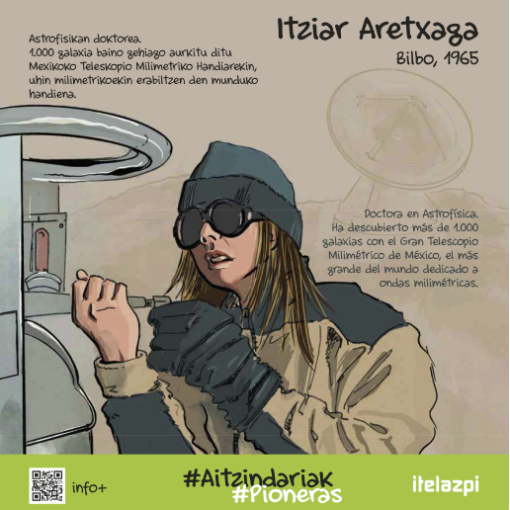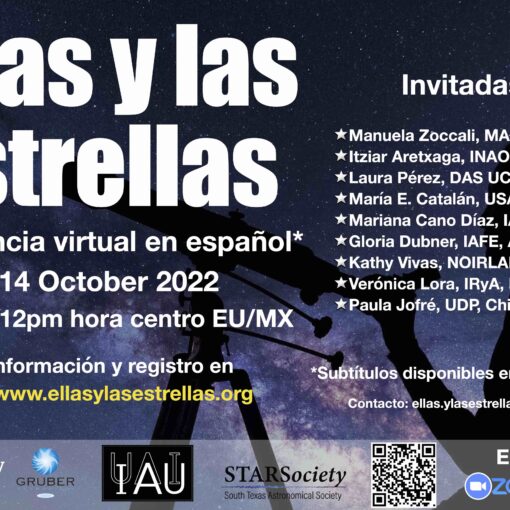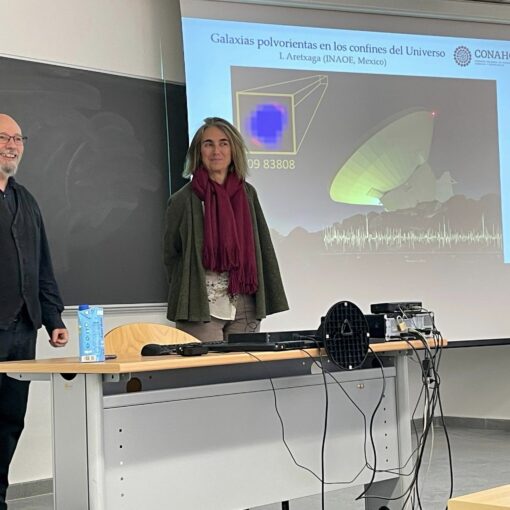Also available in: Español (Spanish) Euskara (Basque)
What is the structural support of distant star-forming galaxies? Rotation like in the Milky Way? Or radial random motions, as in elliptical galaxies? This technical article touches on this issue 👉 https://arxiv.org/abs/2306.10450 and an explanation for all audiences 👇 1/7
Az9 is a dusty galaxy found by the Alfonso Serrano Large Millimeter Telescope, which the Hubble Space Telescope records as 3 independent images, due to distortions caused by a cluster of galaxies located in the line of sight between it and us (gravitational lensing effect). ). 2/7
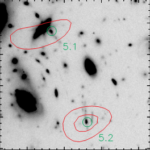
With ALMA observatory we measure the distance, morphology, rotation and turbulence of the interstellar medium of Az9, which forms stars at a rate of 30 solar masses per year (30 times more than the Milky Way). For that, it was necessary to reconstruct the image of the galaxy without distortions. 3/7
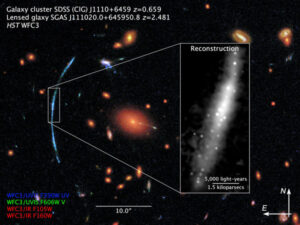
The light from the galaxy is shifted to smaller frequencies by a factor of 5.274 (redshift z=4.274), which puts it about 25 billion light-years away (proper distance), and a mass of stars already formed of two billion solar masses. 4/7
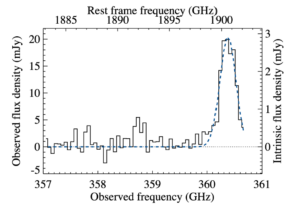
The emission line [CII] makes it possible to measure the relative velocity of different parts of the galaxy with respect to its center. We detect ordered rotational motions of a disk ~6000 light-years in diameter at ~139 km/s, and also turbulent motions (~29 km/s). 5/7
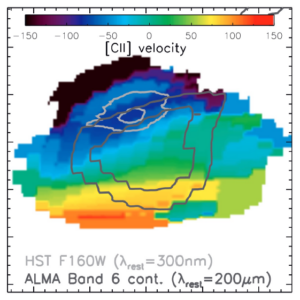
The galaxy, therefore, is mainly supported by rotation: it is a stable disk with stars forming, where the centrifugal force balances the tendency of gas and stars to fall towards the center by gravity. Galaxy formation models do not predict disks as stable as this one. 6/7
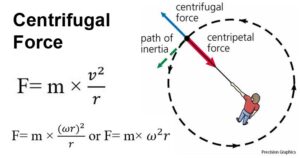
The article is headed by my colleague Alexandra Pope (UMass-Amherst , USA) and it is signed by 15 other researchers from Australia, Denmark, Spain, the United States and Mexico, including myself. 7/7
Copy of my astro-thread on Twitter, tweeted on 23/07/31
